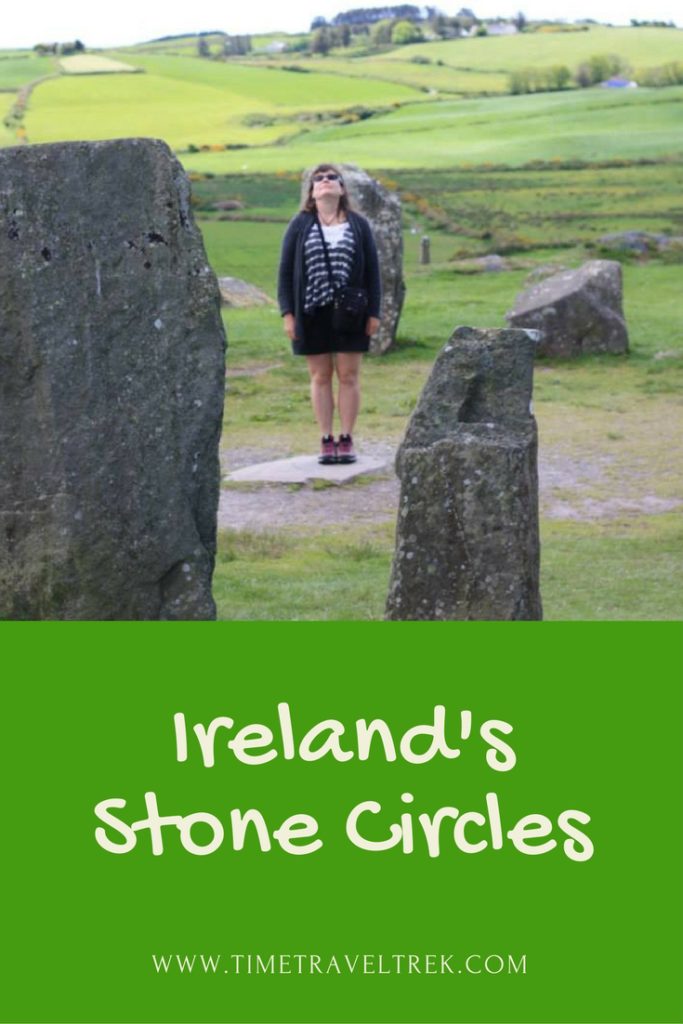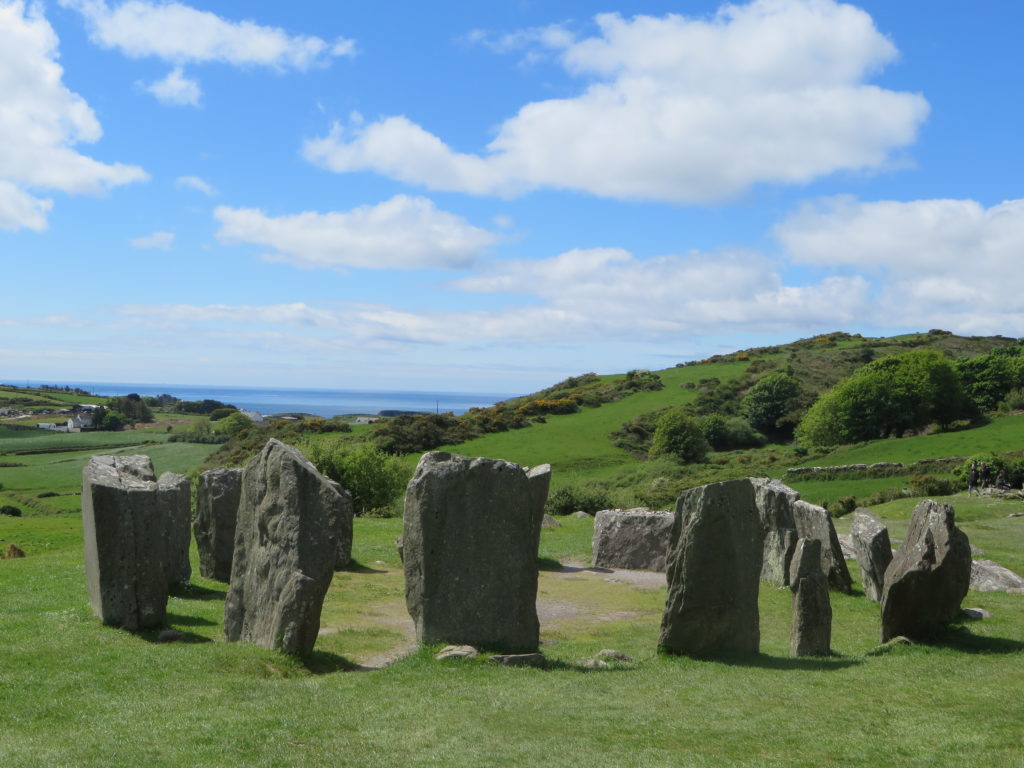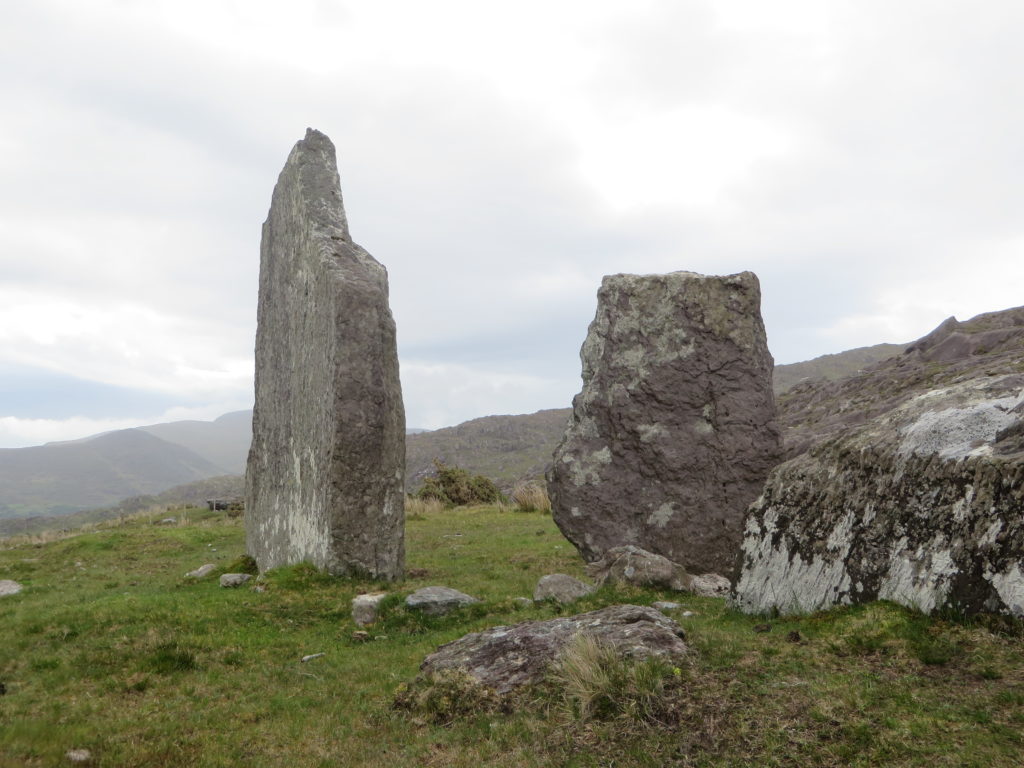When you think of a Celtic stone circle, it’s most likely Stonehenge – the granddaddy of all stone circles. But rings of standing stones are more common in the land of the Celts than you’d think. There are somewhere in the neighbourhood of 235 stone circles in Ireland. Almost half of these are found in Cork and Kerry in southern Ireland.
[Updated July 2024]
Disclosure: This post contains Affiliate Links.

Table of Contents
What are stone circles in Ireland?
Simply put, stone circles are standing stones. They are typically made of sandstone or quartz. The rocks are arranged in a circular pattern. These circles can range in size from a few metres to over 100 metres (over 330 ft) in diameter.
While the exact function of these megalithic sites is still up for debate, it is believed that they served various religious, cultural gatherings, and/or astronomical purposes.
There are huge numbers of stone circles in Ireland. Look at the interactive map of stone circles in the Republic of Ireland on the Irish Archaeology site. Your eyes will quickly register the cluster of dots on the southern end of the country.
Yes, the counties of Cork and Kerry have more than their fair share of stone circles.
Looking for even more stone circles?
Check out Stone Circles: A Field Guide for 424 key stone circle sites in Britain and Ireland.
What makes these megalithic sites different?
The stone circles in Ireland are different than Stonehenge. First off, they’re smaller – sometime only a handful of stones. Secondly, they are numerous – over 100 in Cork and Kerry alone. They alway have a recumbent stone – located in the west or southwest quadrant of the circle. Finally, they have two to four entrance or portal stones – on the eastern side.
The recumbent stone and the portal stones form an axis, or line. In many of these circles, this axis aligns with specific solar or lunar phenomena – such as the winter solstice, spring equinox, or moonrise or moonset positions during the lunar cycle. Most researchers agree that they may have had a ritual or religious function.

The Drombeg Stone Circle
This easy-to-access circle – also known as The Druid’s Altar – dates back to the Bronze Age. Its alignment to sunset during winter solstice was first noted in the 1920s by local Archaeo-astronomer, Boyle Somerville.
The circle – near Rosscarbery in County Cork – has been restored with 13 or the original 17 stones. Drombeg Stone Circle offers a sense of what it might have been like when it was built over 4,000 years ago. Outside of the circle, there are the remains of two prehistoric stone huts.
On the Hunt for More Stone Circles
While Drombeg is a gem, take a look at Clodagh, Maughanaclea, Reanascreena, Carrigagrenane, or Lissyvigeen. The names of these mysterious monuments alone elicit excitement for travellers on a quest for adventure outside the norm.

It’s a challenge and an adventure all rolled into one. To aid us in our quest to discover a few more circles, we picked up a copy on our drive across the southern edge of the country of “The Stone Circles of Cork & County Kerry: An Illustrated Map/Guide.” Researched by Jack Roberts, it is a highly-recommended resource!
If these remnants of the past fire your imagination, you might want to check out the Gazetteer of Irish Prehistoric Monuments for a list of many more megalithic sites in County Cork (here) and County Kerry (here).
Read more about other Irish adventures
Hi! Where did you find a copy of the “The Stone Circles of Cork & County Kerry: An Illustrated Map/Guide.” Thank you!
I honestly don’t remember exactly where we picked it up, but it was somewhere along our drive in southern Ireland.